In My Grain Bin
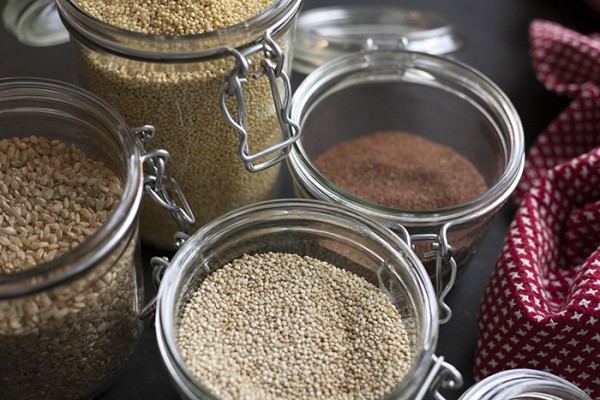
Grains have been a part of the human diet for thousands of years, and yet they’ve become controversial (dare I say…demonized?) lately due to decades of hybridization that has altered wheat for modern consumption. This has created gluten sensitivities and a movement away from grains containing gluten. In some cases, away from grains altogether.
But still, grains are delicious, and offer a unique opportunity to play in the kitchen; quinoa-oatmeal-chia cereal, anyone? Because of the range of grains available, you can test which grains satisfy you, while also leaving you feeling energized and not bloated. You know, Discover your Nutritional Style®!
Personally, I prepare gluten free grains for myself and my family, but some ancient grains have found their way into my cupboard that are not gluten free as well. I use them sparingly, and because they are organic, non-modified varieties, they seem to digest better than modern wheat does.
You can take a peek at some of these ancient, and newly popular, grains below at the bottom of the following list. (Note: if you have Celiac, or suffer from gluten sensitivities, they are not for you.)
1. Millet
Millet is not just for bluejays.
This tiny, mild tasting yellow grain is one of my favorites for an easy, fast cooking pilaf. Millet is high in magnesium, a mineral that many people are deficient in, and tastes great drizzled with a little bit of EVOO or grass-fed butter for you Healthy Omnivores.
2. Teff
This high protein, tiny grain is delicious as a warm breakfast cereal, with a little bit of maple syrup and fresh almond milk. A food staple in Ethiopia; my husband is a huge fan of fresh, homemade Injera (the spongy bread/utensil) while traveling there, and stateside, in our favorite Ethiopian Restaurant in D.C.
3. Quinoa
Quinoa is the new black.
A favorite in our house, I often use this small, protein-packed seed from the Andes to create recipes for my blog (check out the popular Quinoa with Roasted Vegetables or my Quinoa Breakfast Pudding for starters). You read that right. It’s not even a grain; it’s a seed. PLUS quinoa contains balanced proteins, healthy fats, and is easy to grow, making it an increasingly popular option worldwide. This has affected it’s availability and price, sadly. I love that it cooks quickly, it’s a great choice for a last minute meal.
4. Brown Rice
This classic old-school grain is a staple in Macrobiotic fare and a standard offering in sushi and Japanese restaurants—and possibly your home, too. Brown rice is gluten free and it’s outer brown fiber coating is what separates it from the white stuff, allowing it to be more slowly absorbed and providing you with extra nutrients and B Vitamins.
5. Oats
Oats provide a satisfying, fiber and protein rich meal; a great way to help reduce cholesterol and energize you all morning long. While naturally gluten free, they’re often processed along with other grains that do contain gluten, so if you eat a gluten free diet, check your label. We prefer slow cooking steel-cut oats in our house, but for rushed mornings organic instant oatmeal will do just fine! Kids love cinnamon and goldenberries added for natural sweetness.
6. Wild Rice
Actually the seed of marsh grass, Wild Rice is higher in protein than most grains. This takes about an hour to cook, much like brown rice, and is wonderful mixed with brown rice as a pilaf. This mineral rich rice contains lots of fiber, iron and folate. Thanksgiving wouldn’t be the same without this one.
7. Farro
While not gluten free, farro is an ancient grain and therefore less modified that modern versions of durum wheat. It’s delicious, firm bite makes it a growing favorite among trendy chefs today, making it a popular substitute for risotto and hearty grain dishes like this one.
8. Freekeh (freak-eh)
This is wheat that’s been harvested while young and green, and roasted. It’s quickly becoming a new, hot grain in popular restaurants (maybe because it’s so fun to say? FREEKEH!) and contains more protein and minerals than mature wheat. Loved for it’s ultra high fiber level, freekeh keeps you satisfied, longer. If you are sensitive to gluten, freekeh is not for you.
9. Kamut
is an ancient wheat that was first discovered in Egypt thousands of years ago, offering protein, selenium, zinc, magnesium and iron to ancient civilizations as well as modern ones. Because it’s so dense, this grain holds up to stews and long-cooking soups, retaining a chewy texture. This ancient grain is also not gluten free.
Now, it’s YOUR turn. What are your favorite grains? Are you gluten free? Experimenting with ancient grains in the kitchen? Or have you forsaken grains altogether?
Share your story here!
XO
H.
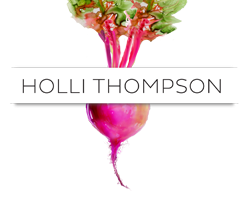
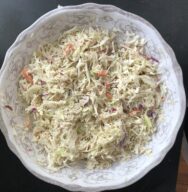
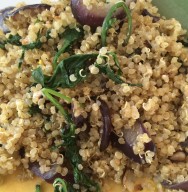
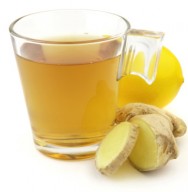

Jennifer / 6.20.2014
This morning I ate your Banana Nut "Ice Cream".
Dear grains, I love you all. Farro being my my most favorite. Like you, Holli, quinoa works for me, but the others? They make me feel less than vital. So I include them knowing I’ll feel bad later and savoring every bite. My trick is that I eat grains only when they’re special—like in a new recipe, or at a local artisan bakery. But you know what, that’s not true. I’m a sucker for gain! I don’ want to go grain free or gluten free, but I CAN maintain honest awareness of how they fit into my Nutritional Style.
Holli / 6.20.2014
Thanks, Jen, for your honesty in navigating your grain love. It sounds like a balance is in order, and I’d recommend doing periods of time, like a cleanse, without any grains to give your digestion a rest and reset. But I think you know that, and do it already. Lot’s of Love, H.XO
Joan / 6.20.2014
This morning I ate Nothing yet :).
I heard a disturbing report that quinoa has become so popular that the large corporations have now taken over from the small farmer who depended on the grain for subsistence. Is this true? If so, what can we do about helping the little guy and not big corporations ?
Holli / 6.20.2014
Joan, thanks for bringing this topic up.
There is a lot of information out there now, some supportive and some derogatory. I’ve attached 2 articles, from Slate and Huffington Post. If this popularity continues, we know that huge corporations will get into the act; many are investigating growing it here, which may eventually be to the detriment of S.American farmers.
For now, I’d recommend choosing fair trade quinoa.
http://www.slate.com/articles/life/food/2013/01/quinoa_bad_for_bolivian_and_peruvian_farmers_ignore_the_media_hand_wringing.html
http://www.huffingtonpost.com/2013/07/08/fair-trade-quinoa_n_3561949.html
Thanks,again,
H.XO